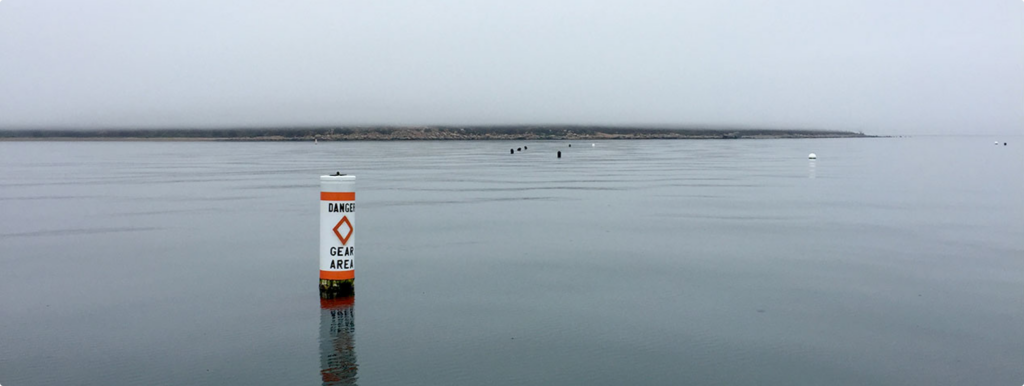Buoys should be large enough to maintain the buoyancy of your gear but small enough that they don’t create excessive drag in bad weather.
Back to: Gear Selection
Size
When it comes to choosing buoys, our general guidance is that your buoys should be large enough and there should be enough of them to maintain the proper buoyancy of your gear; but you also want to minimize their use wherever you can. Too big or too many buoys tend to create excessive drag on your arrays in bad weather and can damage your kelp. The more buoys you have, the greater the chance your gear will snag floating debris or the buoy line will swing around and pull the kelp off your line.
GreenWave Tip
It might take some practice and finagling to perfect the number of buoys that work for your setup, but you always want to be looking for the sweet spot between proper buoyancy and minimal use.

This image shows a range of Polyform buoys, which are commonly used in ocean farming. There are many equivalent brands with similar buoyancy that also work well. In general, we recommend:
Single-Line Array
- A-1 (12″ diameter) for growline and tensioning buoys
- A-2 buoy (16″-20″ diameter) for anchor line buoys
5-Line Array
- A-3 buoy (18″-24″ diameter) for anchor line buoys
- A-1 buoy (16″-20″ diameter) for midline spreaders
One thing to remember is that you can overfill or underfill Polyform buoys, which will result in different amounts of buoyancy. It’s important to note the pounds of buoyancy for each size of Polyform buoys. This could also help you substitute a different type of buoy with similar buoyancy.
| Buoy Size | Pounds of Buoyancy |
|---|---|
| A-0 | 13.7 |
| A-1 | 29.82 |
| A-2 | 70 |
| A-3 | 124 |
| A-4 | 192.5 |
Color
Another important point of consideration is the color of your buoys. Often, buoys are the only portion of your farm that’s visible from the surface of the water, so you’ll want to consider your surroundings and the social context of your farm when making this choice. The photo on the left shows one of the arrays on the GreenWave farm, which is located just off the coast of a densely populated part of Connecticut. There, we’ve chosen to use black and white (more neutral colors) to minimize the visual impact of the farm. The photo on the right is of a remote farm site near Craig, Alaska where there are few residents. There, having brightly-colored buoys makes sense to clearly mark the gear to passing boat traffic. You also could also consider using different colored buoys to signify different things on your farm. For example, yellow is often used to signal caution on the perimeter of a site.


Regulation
One thing to note is that the color, type, and quantity of buoys you use may be dictated by the agencies that oversee the lease and permitting process in your area, particularly for perimeter markings. Some states require farmers to use specially designed regulatory marker buoys (RMBs), such as the white standard can buoy shown in the picture of the GreenWave farm below. RMBs of this type may cost between $150 and $300 apiece, and they take time to manufacture. In our Farm Design Tool, we’ll automatically add RMBs to your farm design and budget if they are required in your state. This will also increase your site area by 50 feet in both dimensions to accommodate this buffer. Even if your state doesn’t require marker buoys, we recommend using them to warn passing boaters to avoid your gear.
